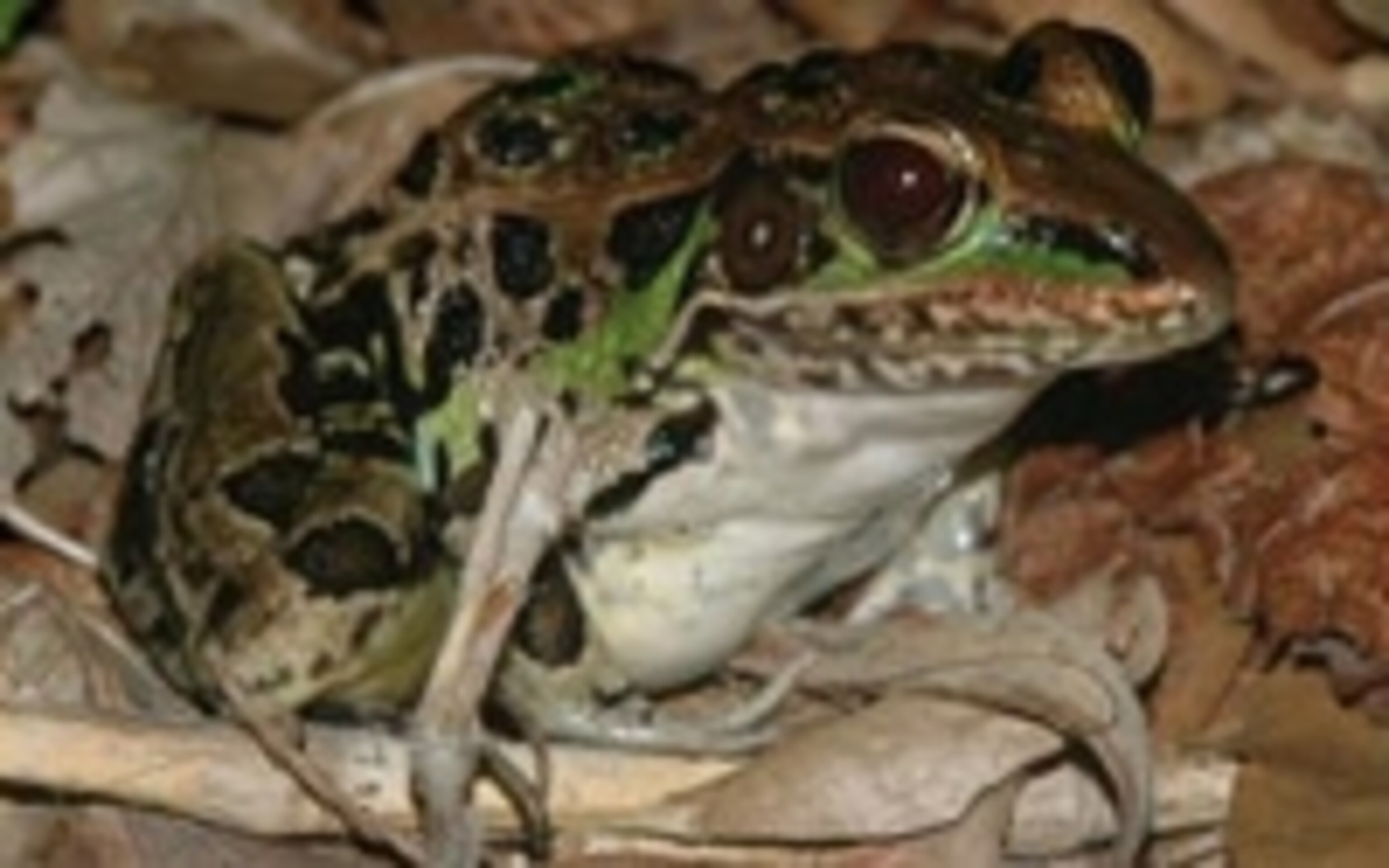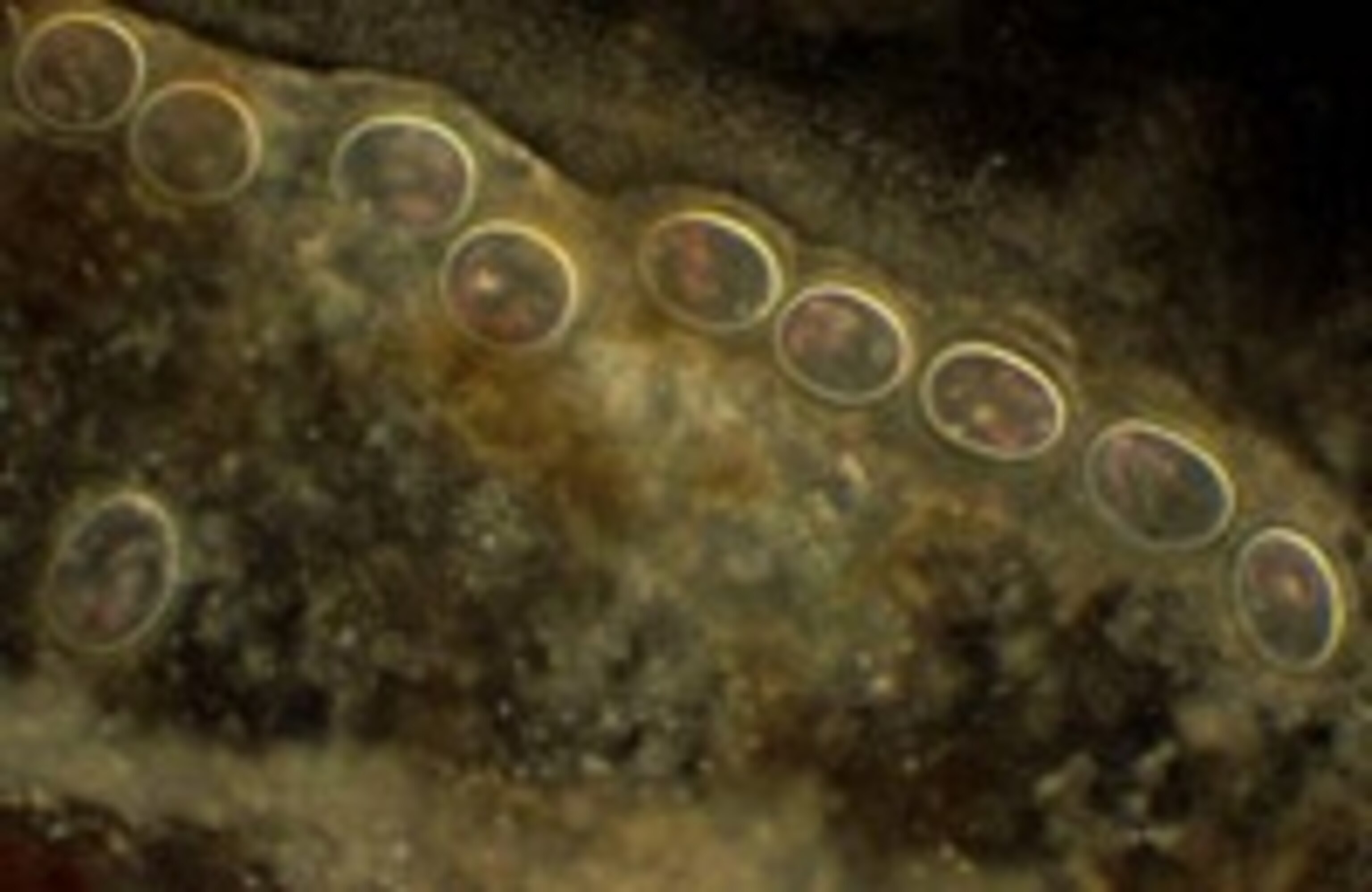Common pesticide is good news for parasites, bad news for frogs
Our amphibians are not doing well. Populations of frogs, toads, salamanders and newts the world over are falling dramatically. Their moist, permeable skins and their need for water to reproduce make them vulnerable to a multitude of threats including drought brought on by climate change, a deadly fungus, and other infectious diseases. Now, we can point an accusatory finger at another culprit – a chemical called atrazine that is second most commonly used pesticide in the United States, and perhaps the world.

Jason Rohr and colleagues from the University of Florida found that atrazine exposes the frogs to larger hordes of parasites. The pesticide encourages the growth of algae that is eaten by snails. They are host to parasitic worms called trematodes (flukes), which use snails as a transit station for their journey into the bodies of frogs. More atrazine means more algae, more snails, more parasites and sicker frogs.
Rohr discovered this tangled web by studying the northern leopard frog, a North American species that, like most of its kin, is in decline. Across 18 wetlands in Minnesota, Rohr looked at local frogs, the parasites they carried and the characteristics of their local environment. They measured everything from the numbers of other species, the soil composition, the patchiness of the habitats and the chemicals in the water, to see if anything in the local environment could consistently explain the severity of trematode infections.
Atrazine stood out; more than anything else, its use strongly predicted how ridden the local frogs were with trematodes. In some areas, frogs were relatively healthy and in others, they were heavily burdened, but the levels of atrazine in the water explained at least half of this variation. Using the rest of the data, Rohr’s team showed that atrazine levels were related to the abundance of snails, which in turn affected the numbers of trematodes hitching a ride on local tadpoles. The pesticide also had an accomplice – phosphate fertiliser, which also served to fuel the algae that feed the trematode-bearing snails. Together, atrazine and phosphate accounted for 74% of the variation in infection rates.

Trematode infections are serious matters. Infected tadpoles become debilitated, suffer from kidney damage and if they manage to transform into frogs, the process of metamorphosis goes haywire and they develop grotesquely deformed limbs (making them easy prey for birds, the worms’ final host). These misshapen limbs started becoming noticeably more common among American frogs in the 1990s and atrazine’s rise to agricultural dominance at least partly explains this boon in deformities.
Rohr’s case for blaming atrazine is strong – after all, it emerged as the top explanation among 240 possible contenders. He confirmed his theory by using 12 massive cattle tanks, each containing 800 litres of water, to set up a series of wetland simulations. In each tank, he added the same cocktail of amphibian tadpoles, snail eggs, algae, plankton, insects and various plants, but in a third of them, he also added a single dose of atrazine at the sorts of concentration you would expect in the environment.
Four weeks later and the snails in the atrazine water outnumbered their counterparts in the untouched tanks by a factor of four. The reason, as expected, was an abundance of food – atrazine killed off the plankton in the tanks, which made the water clearer, allowed more light through and left more nutrients unclaimed. Algae took advantage of this boon and the snails exploited the algal blooms.
Of the two frog species in the tanks, both had weakened immune systems in response to atrazine. Tadpoles living among high levels of atrazine also had fewer clusters of cells called melanomacrophages, which normally gather to fight parasitic infections. So atrazine hits frogs with a one-two punch, not only burdening them with more trematodes but also weakening their anti-parasite defences.
The global fall of amphibians is often blamed on infectious diseases but it’s proven difficult to work out which are the most severe and why they have been taking such a toll on the amphibians in recent years. Only by answering these questions with research like this can we find ways of saving these animals.
Reference: Jason R. Rohr, Anna M. Schotthoefer, Thomas R. Raffel, Hunter J. Carrick, Neal Halstead, Jason T. Hoverman, Catherine M. Johnson, Lucinda B. Johnson, Camilla Lieske, Marvin D. Piwoni, Patrick K. Schoff, Val R. Beasley (2008). Agrochemicals increase trematode infections in a declining amphibian species Nature, 455 (7217), 1235-1239 DOI: 10.1038/nature07281
